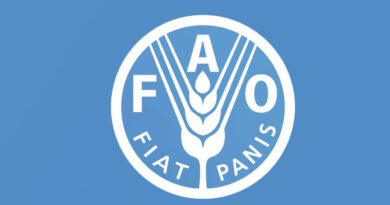Alarming signs as the global food import bill set to rise to nearly US$2 trillion due to higher prices
11 November 2022, Rome: The world food import bill is estimated to rise to US$1.94 trillion in 2022, higher than previously expected, according to a new report released today by the Food and Agriculture Organization of the United Nations (FAO).
The new forecast presented in FAO’s Food Outlook would mark an all-time high and a 10-percent increase over the record level of 2021, although the pace of the increase is expected to slow down in response to higher world food prices and depreciating currencies against the United States dollar. Both weigh on the purchasing power of importing countries and, subsequently, on the volumes of imported food.
The bulk of the increase in the bill is accounted for by high-income countries, due mostly to higher world prices, while volumes are also expected to rise. Economically vulnerable country groups are being more affected by the higher prices. For instance, the aggregate food import bill for the group of low-income countries is expected to remain almost unchanged even though it is predicted to shrink by 10 percent in volume terms, pointing to a growing accessibility issue for these countries.
“These are alarming signs from a food security perspective, indicating importers are finding it difficult to finance rising international costs, potentially heralding an end of their resilience to higher international prices,” the report from FAO’s Markets and Trade Division warns.
The Food Outlook report, which breaks down food trade patterns by food groups, warns that existing differences are likely to become more pronounced, with high-income countries continuing to import across the entire spectrum of food products, while developing regions are increasingly focused on staple foods. In this context, FAO welcomes the approval by the International Monetary Fund of a Food Shock Window – broadly based on FAO’s Food Import Financing Facility proposal – as an important step to ease the burden of soaring food import costs among lower income countries.
The Food Outlook also assesses global expenditures on imported agricultural inputs, including fertilizers. The global input import bill is expected to rise to US$ 424 billion in 2022, up 48 percent from the year before and as much as 112 percent from 2020.
Higher costs for imported energy and fertilizer are behind the foreseen increase. Both are particularly relevant in import bills, posing strains for the current accounts of low-income and lower middle-income countries. As a result, some countries may be forced to reduce input applications, almost inevitably resulting in lower agricultural productivity and lower domestic food availability. “Negative repercussions for global agricultural output and food security” are likely to extend into 2023, according to FAO.
(For Latest Agriculture News & Updates, follow Krishak Jagat on Google News)















